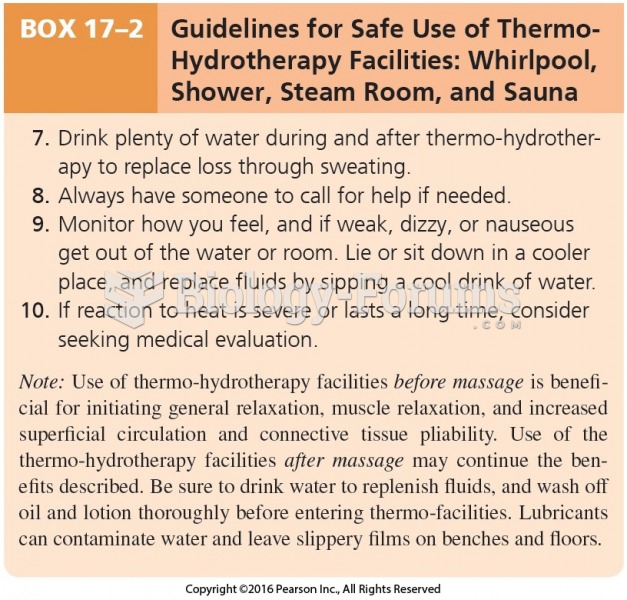|
|
|
More than 34,000 trademarked medication names and more than 10,000 generic medication names are in use in the United States.
Asthma-like symptoms were first recorded about 3,500 years ago in Egypt. The first manuscript specifically written about asthma was in the year 1190, describing a condition characterized by sudden breathlessness. The treatments listed in this manuscript include chicken soup, herbs, and sexual abstinence.
There are 20 feet of blood vessels in each square inch of human skin.
The first monoclonal antibodies were made exclusively from mouse cells. Some are now fully human, which means they are likely to be safer and may be more effective than older monoclonal antibodies.
On average, the stomach produces 2 L of hydrochloric acid per day.







